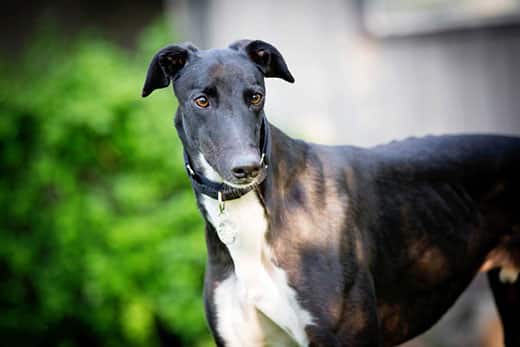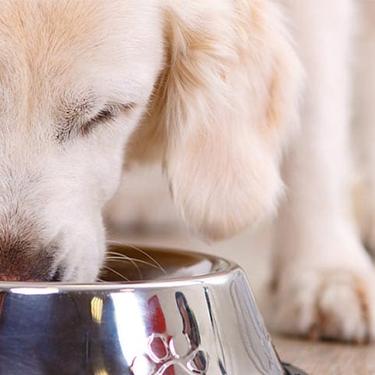
-
Find the right food for your pet
Take this quiz to see which food may be the best for your furry friend.
Find the right food for your pet
Take this quiz to see which food may be the best for your furry friend.
Featured products
 Small & Mini Savory Stew with Chicken & Vegetables Dog Food
Small & Mini Savory Stew with Chicken & Vegetables Dog FoodA delicious complement to the nutrition of Science Diet Small & Mini 7+ dog food
Shop Now Adult 7+ Perfect Digestion Chicken, Whole Oats & Brown Rice Recipe Dog Food
Adult 7+ Perfect Digestion Chicken, Whole Oats & Brown Rice Recipe Dog FoodScience Diet's breakthrough nutrition supports ultimate digestive well-being & healthy microbiome for dogs age 7+
Shop Now Adult Healthy Cuisine Roasted Chicken, Carrots & Spinach Stew Dog Food
Adult Healthy Cuisine Roasted Chicken, Carrots & Spinach Stew Dog FoodDelicious roasted chicken paired with tender vegetables in a succulent stew
Shop NowFeatured products
 Adult 7+ Senior Vitality Chicken & Vegetable Stew Cat Food
Adult 7+ Senior Vitality Chicken & Vegetable Stew Cat FoodImproves Everyday Ability to Get Up & Go
Shop Now Adult Savory Entrée Can Variety Pack Cat Food
Adult Savory Entrée Can Variety Pack Cat FoodPrecisely balanced nutrition with the delicious taste of savory minced chicken to help fuel the energy needs of cats during the prime of their life
Shop Now Adult 7+ Tender Tuna Dinner Cat Food
Adult 7+ Tender Tuna Dinner Cat FoodWith delicious chunks in a decadent gravy
Shop Now -
Dog
- Dog Tips & Articles
-
Health Category
- Weight
- Food & Environmental Sensitivities
- Urinary
- Digestive
- Joint
- Kidney
-
Life Stage
- Puppy Nutrition
- Adult Nutrition
- Senior Nutrition
Cat
- Cat Tips & Articles
-
Health Category
- Weight
- Skin & Food Sensitivities
- Urinary
- Digestive
- Kidney
-
Life Stage
- Kitten Nutrition
- Adult Nutrition
Featured articles
 Does My Pet Hate Me?
Does My Pet Hate Me?Learn tips for bonding with your pet if you've ever thought, 'My dog doesn't like me, or 'Why do I have a standoffish cat?'
Read More Why Are Dogs and Cats So Cute?
Why Are Dogs and Cats So Cute?If waggy puppy dog tails and furry kitten yawns make you swoon, you're not alone. Why are cats so cute? And, dogs too! Let's find out!
Read More Do Dogs and Cats have Belly Buttons?
Do Dogs and Cats have Belly Buttons?Learn whether cats & dogs have belly buttons like humans, what the function is, and if there are any health concerns associated with it.
Read More -


Dogs being fed upright in high chairs. While it may seem like an odd trend to the untrained eye, parents of dogs with megaesophagus know this scene isn't just staged for social media — it's an everyday necessity.
Certain breeds are born with this condition, which makes it difficult for them to digest food unless they eat in an upright position. Managing megaesophagus in dogs can be achieved through a special diet and, in some rare cases, surgery.
What Is Megaesophagus in Dogs?
Normally when a dog swallows, a muscular tube called the esophagus moves the food from their mouth to their stomach to be digested. In megaesophagus, dogs are unable to swallow food normally because their esophagus lacks the muscular tone and motility needed to move food and water. Instead, their esophagus dilates and food backs up, causing them to regurgitate the meal.
This condition is the most common cause of regurgitation in dogs. It's a congenital condition, meaning some dogs are born with it. Megaesophagus is a heritable disease in miniature schnauzers and wire-haired fox terriers, Newfoundlands, German shepherds, Great Danes, Labrador retrievers, Irish setters, shar-peis and greyhounds are also predisposed.

This condition can also be acquired secondary to another disease, like neurological or hormonal disorders, as well as trauma to the nervous system, blockage in the esophagus, severe esophageal inflammation or exposure to toxins.
In many cases, unfortunately, the cause is never determined.
What Are the Signs of Megaesophagus in Dogs?
The main indicator of megaesophagus in dogs is regurgitation fairly soon after eating. One thing to note is that regurgitation looks different from vomiting. Vomiting usually involves audible retching where the contents that come back up originate in the stomach or small intestines. With regurgitation, food, water and saliva come back up without retching and originates within the esophagus, usually without warning.
Other signs may include weight loss despite a voracious appetite, poor growth in puppies, excessive drooling or bad breath. Dogs with megaesophagus are at risk for aspirating regurgitated food into their lungs and developing aspiration pneumonia. Signs of aspiration pneumonia include cough, nasal discharge, fever, poor appetite and lethargy.
If your dog is experiencing any of these signs, consider making an appointment with your veterinarian for further evaluation as soon as possible.


Tasty Tips
How Is Megaesophagus in Dogs Diagnosed?
Both megaesophagus and aspiration pneumonia are usually seen on a chest X-ray. There are no specific blood tests for megaesophagus; however, your vet may want to run additional tests to determine if the condition is secondary to another disorder. This may require an esophageal endoscopy.
Endoscopy is where a camera on the end of a tube is passed down the esophagus to look for abnormalities. Endoscopy is a useful procedure in cases of esophageal stricture, tumors or foreign bodies. This procedure will require dogs to go under anesthesia, but generally, your dog will be able to return home after the procedure.
If the underlying cause can be treated & intervention is early enough, the esophagus may regain motility and megaesophagus may regress. In many cases, however, megaesophagus is a lifelong condition that must be managed.
Managing Megaesophagus in Dogs
Preventing aspiration and allowing food to travel to the stomach is key in the management of megaesophagus in dogs. Dogs with this condition are often underweight and may require a high-calorie diet, which can be best satisfied with wet or canned food.
When these soft foods are hand-rolled into bite-sized meatballs, they can stimulate a dog's esophagus to contract and move solids. A therapeutic diet may be a good choice for dogs with megaesophagus; talk to your veterinarian to see if one might be right for your dog.
Dogs should be fed in an upright position, about 45 to 90 degrees to the floor, which is where high chairs come in handy. The Bailey chair is designed specifically for dogs who have megaesophagus, supporting them in the upright position for feeding. If your dog is only mildly affected, you may not need to invest in a special chair; however, food bowls must be elevated enough from the floor so that the dog does not have to bend down at all to eat.
Some dogs may be so severely affected that they cannot keep anything down. In these cases, a permanent stomach tube can be inserted by a vet to bypass the esophagus entirely. Stomach tubes are well-tolerated and generally easy to maintain.
It is very important to monitor dogs with megaesophagus daily for any signs of life-threatening aspiration pneumonia, such as difficulty breathing, fever and rapid heart rate. Aspiration pneumonia and malnutrition are the leading causes of death in dogs with megaesophagus. If your dog has this condition, be sure to check their weight every week and monitor for signs of aspiration pneumonia daily.
While megaesophagus can present some challenges, it doesn't have to interfere with your pet's quality of life. With appropriate management and monitoring, in conjunction with a strong partnership with your local vet, many dogs with megaesophagus can have a relatively normal life.


Dr. Sarah Wooten graduated from UC Davis School of Veterinary Medicine in 2002. A member of the American Society of Veterinary Journalists, Dr. Wooten divides her professional time between small animal practice in Greeley, Colorado, public speaking on associate issues, leadership, and client communication, and writing. She enjoys camping with her family, skiing, SCUBA, and participating in triathlons.
Related products
Related articles

Learn about choosing the right dog food to help ensure your adult dog will receive the correct balance of nutrition.

Learn the the dangers of feeding your dog chocolate, which types are most dangerous, and what to do if you discover that they have consumed chocolate.

Proper nutrition for your pregnant or nursing dog is vital to her and her puppy's health. Learn what you should do provide her with the proper nutrients.

Learn how today's wet dog food blends have gotten a face lift, and how you'll provide your dog the nutrition he needs in the form he loves.

Put your dog on a diet without them knowing
Our low calorie formula helps you control your dog's weight. It's packed with high-quality protein for building lean muscles, and made with purposeful ingredients for a flavorful, nutritious meal. Clinically proven antioxidants, Vitamin C+E, help promote a healthy immune system.
Put your dog on a diet without them knowing
Our low calorie formula helps you control your dog's weight. It's packed with high-quality protein for building lean muscles, and made with purposeful ingredients for a flavorful, nutritious meal. Clinically proven antioxidants, Vitamin C+E, help promote a healthy immune system.

